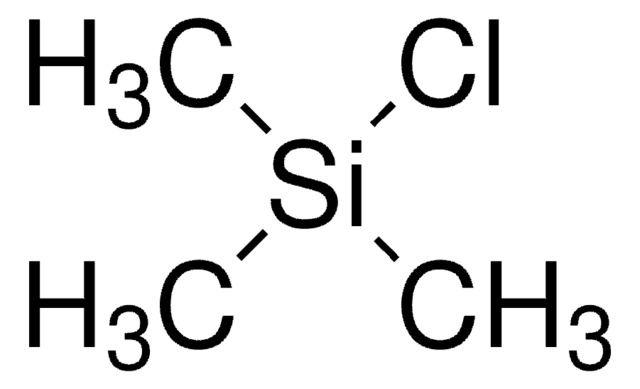379212
Hexamethyldisilazane
ReagentPlus®, 99.9%
Synonym(s):
1,1,1,3,3,3-Hexamethyldisilazane, HMDS
About This Item
Recommended Products
Quality Level
product line
ReagentPlus®
Assay
99.9%
form
liquid
refractive index
n20/D 1.407 (lit.)
bp
125 °C (lit.)
SMILES string
C[Si](C)(C)N[Si](C)(C)C
InChI
1S/C6H19NSi2/c1-8(2,3)7-9(4,5)6/h7H,1-6H3
InChI key
FFUAGWLWBBFQJT-UHFFFAOYSA-N
Looking for similar products? Visit Product Comparison Guide
General description
Application
- As a precursor to fabricate multilayer quantum dot light-emitting diodes.
- To modify dielectric surfaces of organic thin film transistors.
- To fabricate superhydrophobic coatings on epoxy resins.
- For the silylation of alcohols and phenols.
Legal Information
Signal Word
Danger
Hazard Statements
Precautionary Statements
Hazard Classifications
Acute Tox. 3 Dermal - Acute Tox. 4 Inhalation - Acute Tox. 4 Oral - Aquatic Chronic 3 - Flam. Liq. 2
Storage Class Code
3 - Flammable liquids
WGK
WGK 2
Flash Point(F)
52.5 °F - closed cup
Flash Point(C)
11.4 °C - closed cup
Personal Protective Equipment
Choose from one of the most recent versions:
Already Own This Product?
Find documentation for the products that you have recently purchased in the Document Library.
Customers Also Viewed
Articles
atomic layer deposition (ALD), microelectronics, Mo:Al2O3 films, nanocomposite coating, photovoltaics, semiconductor devices, W:Al2O3 films, composite films, layer-by-layer
A hard disk drive (HDD) is a data storage device that stores digital information by magnetizing nanosized magnets on flat disks and retrieves data by sensing the resulting magnetic field.
Spin-based electronic (spintronic) devices offer significant improvement to the limits of conventional charge-based memory and logic devices which suffer from high power usage, leakage current, performance saturation, and device complexity.
Hybrid organic-inorganic sol-gel materials containing silica were first called “ORMOSILs” in 1984.
Our team of scientists has experience in all areas of research including Life Science, Material Science, Chemical Synthesis, Chromatography, Analytical and many others.
Contact Technical Service






